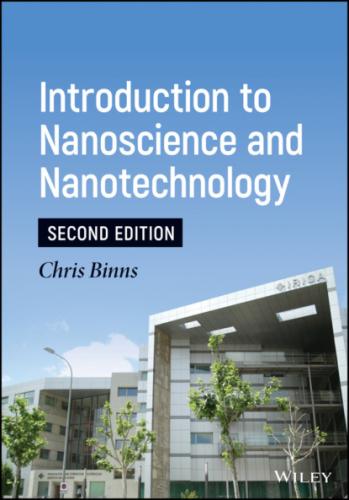Figure 1.16 Silver nanoparticles attacking bacteria. Electron microscope image of P. aeruginosa5 bacteria after exposure to silver nanoparticles. The particles with size ranges 1–10 nm are active in disrupting the cell function. The inset shows a high‐resolution image of some particles attached to the cell's outer membrane.
Source: Reproduced with the permission of the Institute of Physics from J. R. Morones et al. [19].
Since the original work, silver nanoparticles have demonstrated strong antiviral potential against several other viruses, including herpes simplex, hepatitis A virus, hepatitis B virus, huma papillomavirus, and respiratory syncytial virus [21, 22]. All of these viruses have a similar general morphology to that shown Figure 1.17a with a roughly spherical shape and a diameter in the range 40–200 nm, that is straddling the boundary of the nanoworld. They all have an array of glycoproteins on the surface and it is thought that the silver nanoparticles act against them in the same way as in the case of HIV, that is, binding to the glycoproteins and locking the virus out of the host cells. As in the case of bacteria, it is harder for viruses to become resistant to silver nanoparticles as compared to conventional antiviral agents
Here, we have only encountered very brief sketches of a couple of examples of applications of nanoparticles in healthcare. This is a huge and burgeoning field and a more comprehensive discussion is postponed until Chapter 8. As a final example in this chapter, it is worth noting that there is increasing use of nanoparticles in cosmetics such as face creams. In order to replenish certain compounds in the skin, whose reduced concentration is partly responsible for the effects of aging, it is necessary to enable these compounds to penetrate the outermost layers. This can either mean producing the compounds themselves as nanoparticles or binding them onto “carrier” particles that transport them to the deeper layers. Some sunscreen manufacturers now use titanium dioxide nanoparticles in new products as the carriers.
The key aims of this chapter have been to give an impression of the nanometer size scale and to introduce the idea that sufficiently small pieces of matter behave differently from the bulk material. In addition, the novel behavior of nanoparticles depends on their size and several examples have been introduced where the unusual behavior can be put to good use in technology. All the topics discussed fall into the category of Incremental Nanotechnology, and it is evident that this category is already being used or will shortly be used in industrial sectors as diverse as magnetic recording to medicine. All the types of nanoparticles presented here are artificially produced but in the following chapter, naturally occurring nanoparticles and their effect on the environment and our health will be discussed.
Figure 1.17 Silver nanoparticles attached to HIV‐1. (a) Computer‐generated image of HIV, showing glycoprotein “knobs.”
Source: Reproduced with permission from www.virology.net/Big_Virology/BVretro.html.
(b) Electron microscope image, with inset superimposing position of glycoprotein knobs. (c) Electron microscope image of virus after attachment of silver nanoparticles.
Source: Reproduced with the permission of BioMed Central from J. L. Elechiguerra et al. [20].
Problems
1 1 Silver, whose density is 10 490 kg/m3, is used to form spheres of different diameters. Calculate the surface area in m2 of 1 g of Ag spheres of diameter:1 mm10 μm10 nm
2 2 Calculate the proportion of atoms on the surface atomic layer of Ag spheres with the diameters below given that the thickness of the surface atomic shell is 0.289 nm, stating any assumptions made.1 μm10 nm5 nm
3 3 In a magnetic material, the energy of the exchange interaction between neighboring atoms is about 1 eV/atom whereas the magnetic dipolar interaction between neighboring assemblies of atoms averages at 10−5 eV/atom. Use the data to estimate the maximum size of a spherical single‐domain particle. (Hint: assume the exchange interaction only operates between atomic neighbors, whereas in a small particle the dipolar interaction affects all atoms equally. In addition, for an estimate, assume the atoms are cubes with a width of 0.2 nm).6
4 4 An HIV virus with a diameter of 100 nm has 50 glycoprotein extrusions over its surface, each one of which will bind a 5 nm diameter Ag nanoparticle. You are provided with a suspension of 5 nm diameter Ag nanoparticles containing 1 μg Ag per milliliter of liquid. What volume of the suspension is required to saturate 107 viruses in a test tube?
References
1 1 Upward, M.D., Moriarty, P., Beton, P.H. et al. (1997). Measurement & manipulation of Mn clusters on clean and fullerene terminated Si(111)‐7×7. Applied Physics Letters 70: 2114. https://doi.org/10.1063/1.118965.
2 2 Schüler, D. (2002). The biomineralisation of magnetosomes in Magnetospirillium gryphiswaldense. International Microbiology5: 209–214. https://doi.org/10.1007/s10123‐002‐0086‐8.
3 3 McKay, D.S., Gibson, E.K. Jr., Thomas‐Keprta, K.L. et al. (1996). Search for past life on mars: possible relic biogenic activity in Martian meteorite ALH84001. Science 273: 924–930. https://doi.org/10.1126/science.273.5277.924.
4 4 Billas, I.M.L., Chatalain, A., and de Heer, W.A. (1994). Magnetism from the atom to the bulk in iron, cobalt, and nickel clusters. Science 265: 1682. https://doi.org/10.1126/science.265.5179.1682.
5 5 Cox, A.J., Louderback, J.G., Apsel, S.E., and Bloomfield, L.A. (1994). Magnetism in 4d‐transition metal clusters. Physical Review B 49: 12295–12298. https://doi.org/10.1103/PhysRevB.49.12295.
6 6 Apsel, S.E., Emmert, J.W., Deng, J., and Bloomfield, L.A. (1996). Surface‐enhanced magnetism in nickel clusters. Physical Review Letters 76: 1441–1444.
7 7 Knickelbein, M.B. (2002). Adsorbate‐induced enhancement of the magnetic moments of iron clusters. Chemical Physics Letters 19: 221–225. https://doi.org/10.1016/S0009‐2614(02)00024‐6.
8 8 Payne, F.W., Jiang, W., Emmert, J.W. et al. (2007). Magnetic structure of free cobalt clusters studied with Stern‐Gerlach deflection experiments.
